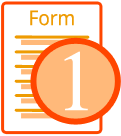October 13, 2011 (Jeff Alan)
A federal loan assistance program modeled after a successful program in Pennsylvania targeting homeowners who had experienced a reduction in income or were at risk of foreclosure due to involuntary unemployment or underemployment will likely only meet half its goals on a national level because so few people could meet the strict guidelines.
The Emergency Homeowner Loan Program (EHLP) was part of last years Dodd-Frank Wall Street Reform and Consumer Protection Act in which $1 billion was put aside to assist homeowners who met the programs criteria.
EHLP was available in twenty-seven states and Puerto Rico and was designed as a complement to the Hardest Hit Fund that was previously available to 18 states and the District of Columbia.
Eligible homeowners could qualify to receive an interest free loan which could be used to pay a portion of their monthly mortgage for up to two years, or up to $50,000, whichever comes first.
After the bill’s passage, the program immediately became bogged down with delays as the Department of Housing and Urban Development (HUD) was tasked with creating a whole new program from the ground up and implementing the requirements of the bill under a strict deadline, leading to a postponement in the launch of the program for months.
The program was subsequently launched in June by HUD in conjunction with NeighborWorks America and was expected to aid up to 30,000 distressed borrowers with an average loan of approximately $35,000.
As the program neared its end on July 22nd, it was woefully short of its goals and was extended until July 27th. With plenty of resources available the program was reopened at the end of August and ran through September 15th.
Response was overwhelming as nearly 100,000 homeowners applied for the program but strict income and delinquency guidelines, employment guidelines and a complicated formula that calculated monthly payments, income and payments in arrears disqualified many applicants.
Fewer than 15,000 applicants are now expected to receive assistance and it’s estimated that about half of the money that was allocated is left unspent. HUD was required to use all of the funds or lose any that was left over, but there have been calls from some members of Congress to either reopen the program or reduce the eligibility requirements for those who have already applied so that more homeowners who are in need can receive assistance.
Tags: EHLP, HUD, Dodd-Frank, mortgage assistance, homeowner assistance, unemployment, underemployment, overly strict guidelines


